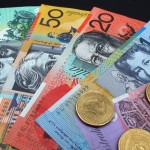 Both West Texas Intermediate and Brent benchmarks were steady during early European trading on Thursday ahead of the release of key U.S. economic data and the conclusion of ECBs policy meeting. A steeper-than-expected fall in U.S. motor gasoline and distillate fuel inventories last week supported prices despite a seventh consecutive increase in U.S. crude inventories.
Both West Texas Intermediate and Brent benchmarks were steady during early European trading on Thursday ahead of the release of key U.S. economic data and the conclusion of ECBs policy meeting. A steeper-than-expected fall in U.S. motor gasoline and distillate fuel inventories last week supported prices despite a seventh consecutive increase in U.S. crude inventories.
On the New York Mercantile, WTI crude for delivery in December traded at $94.78 per barrel at 7:50 GMT, down 0.03% on the day. Prices shifted in a narrow range between $95.00 and $94.68 a barrel. The American benchmark capped six days of declines on Wednesday and surged 1.25%, rising back to positive weekly territory. This was the biggest daily advance since October 2.
Meanwhile on the ICE, Brent futures for settlement in December were up 0.05% on the day at $104.97 per barrel by 7:50 GMT. Prices plunged to a four-month low of $104.82 earlier in the session, while days high stood at $105.22 per barrel. The European benchmark lost 0.7% on Wednesday and is down 0.9% this week.
West Texas Intermediate drew support after the Energy Information Administration reported on Wednesday that U.S. gasoline demand rose to the highest since July and inventories dropped to a one-year low, overshadowing a seventh consecutive increase in U.S. crude stockpiles. Total motor gasoline inventories fell by 3.8 million barrels to 210 million, sharply outperforming analysts’ expectations for a moderate drop by 400 000 barrels, but were still in the upper half of the average range for this time of the year. Demand rose to 9.29 million barrels per day, the most since July.
Distillate fuel stockpiles decreased by 4.9 million barrels to 118 million last week, beating predictions for a 1.5 million drop, and remained at the lower limit of the average range. Gasoline production fell last week, while distillate fuel output rose, averaging 8.4 million and 4.9 million barrels per day, respectively.
The larger-than-expected drawdowns offset a seventh consecutive gain in U.S. crude supplies. Inventories rose by 1.6 million barrels in the week ended November 1, outperforming the median estimate of analysts surveyed by Bloomberg for a surge to 2.1 million barrels. Refineries utilization rate fell by 0.5% to 86.8% from a week earlier. Total U.S. crude oil imports dropped by 235 000 barrels per day to 7.2 million from a week earlier.
Ben Le Brun, market analyst at OptionsXpress in Sydney, commented for CNBC: “The U.S. benchmark is drawing support from the steep fall in oil product stockpiles we saw in the data overnight, suggesting a pick up in demand. Overall, we will see oil and other markets trade in a tight range today as everybody is waiting for ECBs interest rate decision and U.S. GDP numbers.”
Market players remained wary and avoided to take big positions ahead of the release of key U.S. economic data in the next two days and the conclusion of ECBs policy meeting later today. On Thursday, the preliminary reading of the U.S. Q3 GDP growth may show a smaller expansion compared to the preceding three months. Personal Consumption Expenditures probably fell in the third quarter, while core consumer spending is expected to have advanced.
On Friday, October’s non-farm payrolls are projected to have further eased, while the unemployment rate likely inched up to 7.3%, according to analysts’ expectations. Personal income and personal spending are projected to have risen at a slower pace from a month ago. The preliminary reading of the Thomson Reuters/University of Michigan Consumer Sentiment Index may show a rebound to 74.5 in November, up from 73.2 in October.
Any better-than-expected readings of these key indicators will support the U.S. dollar by fueling speculations the Federal Reserve might begin trimming its quantitative easing program earlier than expected. A stronger greenback makes dollar-denominated raw materials more expensive for foreign currency holders and limits their appeal as an alternative investment.
In Europe, some analysts expect the European Central Bank might decide to cut interest rates at its policy meeting today to safeguard the economic recovery of the single-currency bloc after unemployment rate remained at record-high levels. However, officials hinted yesterday policy makers will probably refrain from introducing any changes to rates. The European Commission trimmed its forecast for the Euro zone’s growth as unemployment in the region was at unacceptably high levels. A weakening of the euro boosts the U.S. dollar as its main counterpart, pressuring down dollar-denominated commodities.
“So the markets are now looking for what the ECB will say in its policy meeting today on how it plans to drive growth,” Le Brun added for CNBC.





